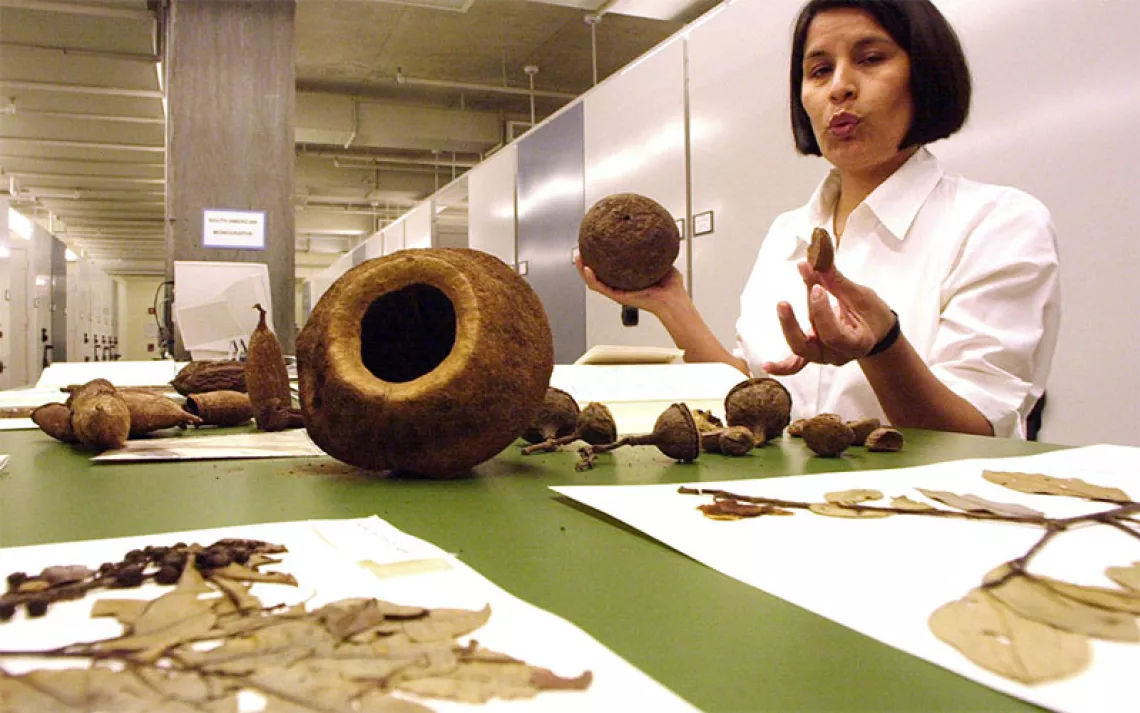Researchers Use Environmental DNA to Monitor Marine Ecosystems
A single cup of water contains fishy fingerprints

Photo courtesy of Mark Stoeckle
As any avid angler knows, it can take a lot of guesswork to figure out where the fish are hiding. For biologists, trying to determine when a fish migration is happening, what species live in a particular stream, and what species breed in a given patch of ocean can be a similar puzzle. But Mark Stoeckle, senior research associate at the Rockefeller University, and other scientists are using a recent technique called environmental DNA (eDNA) to monitor aquatic critters; it has the potential to provide conservationists with a powerful new tool.
The idea isn’t new. About a decade ago, scientists in Europe realized that they could determine what was in a pond by collecting a water sample and analyzing it for DNA, since aquatic animals are constantly relieving themselves, dying, sloughing off skin or scales, and generally leaving plenty of fragments of their genetic material floating about. Over the years, as DNA sequencing has gotten faster and cheaper, more researchers have begun experimenting with eDNA, analyzing samples of water for fish, mollusks, mammals, and everything else that lives in or near water.
Stoeckle, fascinated with the technique, experimented by sequencing the fish in Central Park. But he wanted to know more about what the results showed. “I had questions about what the method is detecting,” he says. “What does the DNA mean? Is it from fish that used to be there? Is the DNA washing in from other areas? I realized that the seasonal fish migrations in the Hudson Bay estuary were a perfect place to test that.”
Between January and July 2016, Stoeckle and a crew of high school assistants tossed buckets into the river from two sites in Manhattan each week, then looked for identifiable fragments of fish DNA. While the early samples had little or no eDNA, the detection rate began to rise until the team consistently found genetic material from 10 to 15 species of fish in early summer—a finding that coincided with what researchers already knew about fish migrations in the Hudson.
In total, the research detected 42 species of fish (along with samples from restaurant fish like tilapia and branzino that were discharged in city sewage), with roughly 80 percent of the species known to be common locally. More importantly, they found that the DNA lasted for what Stoeckle calls the “Golidlocks” period. It persists in the water long enough to indicate that the fish are present but quickly degrades once the fish leave the area. When large numbers of a fish species move into the river, their DNA shows up, then rapidly disappears from the samples once they move on. The research appears in the journal PLOS One.
In Seattle, Ryan Kelly, assistant professor of marine and environmental affairs at the University of Washington, has also worked on several eDNA studies. In one, his team looked at the effect on biodiversity of urbanization in Puget Sound, using eDNA to find 1,600 different species living the area. The study showed that while there was more species diversity close to urban areas, the areas were more homogenous, while remote sections of the sound had different collections of species.
While Stoekle’s study is helping to show the temporal limits of eDNA, one of the other big questions is how to measure the quantity of a fish species using the method. That’s one project Kelly is working on now, looking at eDNA from salmon-counting sites to see if the eDNA can reveal the relative abundance of a species. Once those types of questions are figured out, eDNA could be used for all types of research.
Even in its current form, the technique has the conservation community excited. Stoeckle says the Army Corps of Engineers is interested in the technique since they do a lot of dredging and need to time their activity based on fish migrations and breeding. Currently, they have to use a lot of manpower to trawl for fish, but eDNA could simplify that. “People are the most expensive part of marine research,” says Stoeckle. “I’ve done the numbers, and eDNA saves time and money. Compare pulling up a bucket of water versus chartering a trawler to collect fish samples at $10,000 per day. It’s an order of magnitude less expensive to do.”
Stoeckle is also collaborating with a group that deploys listening buoys 300 to 1,000 meters below the ocean to monitor deepwater fish. Now, they can bring up a water sample and detect the fish living there genetically without adding a lot of extra cost to the study. He’ll also be working this summer with NOAA, using eDNA to study how oyster beds and aquaculture affect species diversity.
Kelly says he’s seen a lot of interest from other researchers as well as state, local, and federal resource managers about using eDNA. He envisions a day when those groups are able to simply collect water samples and send them to a lab to monitor the diversity and health of the waters they protect.
“I do this every day, and it’s easy to lose track of how mind-blowing it is that you can get this from a glass of water,” says Kelly. “This is just the tip of iceberg. There is a huge source of information out there, and we’re still in very early days.”
 The Magazine of The Sierra Club
The Magazine of The Sierra Club



